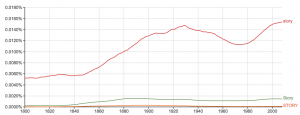 Siobhan Donegan, Collin Horak, Michaela Williams
Siobhan Donegan, Collin Horak, Michaela Williams
Rhetoric
- . The art of using language effectively so as to persuade or influence others, esp. the exploitation of figures of speech and other compositional techniques to this end; the study of principles and rules to be followed by a speaker or writer striving for eloquence, esp. as formulated by ancient Greek and Roman writers.In the Middle Ages rhetoric was included in the seven liberal arts and was taught as part of the trivium (a introductory curriculum at a medieval university).
The Etymology of the word ‘rhetoric’ stems from the Anglo-Norman rethorik, and in Middle French and Old French, referring to, as one of the liberal arts, the art of speaking and writing well and persuasively or with eloquence. In post-classical Latin, the 7th century, the word was rethorica, the art of public speaking, oratory. The Classical Latin rhētorica may be interpreted as either Latinization form of rhētoricē , or use as a noun, short for ars rhētorica, of the feminine of rhētoricus.
Rhetoric is used in literature to appeal to the readers emotions and feelings. Throughout the semester, as a class we talked about devices, such as metaphor, metonym, alliteration, allusion, and how they can be used in literature to bring an eloquence to the text. An author use of this is often to not only grab the reader’s attention but also to convey an important message. While the word rhetoric itself can have different meanings given the context, Aristotle defined rhetoric as “the faculty of observing in any given case the available means of persuasion… Persuasion is achieved by the speaker’s personal character when the speech is so spoken as to make us think him credible”(Aristotle, 6-7). Rhetoric can be seen in all of the following pieces of literature and each author employs it differently.
The play, A Raisin in the Sun, was written by Lorraine Hansberry in 1959. Hansberry writes about the struggles of an African American family who lives in the poorer section of Chicago. Each of the main characters have their own dreams and perspectives on how to live a better life. These dreams include living in a bigger house, becoming a doctor, and the ability to financially provide for the family. Because the family struggles with poverty and the oppression of race and gender in society, their dreams are deferred. Rhetoric is important for analyzing the play because Hansberry used many of rhetorical strategies, including imagery and personification, to show the poverty the Younger family lives in. Rhetoric also helps the reader understand the purpose of the play, along with the identity of the characters within the play.
Hansberry uses rhetoric to show the hardships that each of the main characters have in their lives. For example, in the beginning of the play, Hansberry starts with stage directions.The directions describe the living room, giving the reader an idea of the family’s living conditions. One example of rhetoric used in these stage directions include,“The Younger living room would be a comfortable and well-ordered room if it were not for a number of indestructible contradictions to this state of being. Its furnishings are typical and undistinguished and their primary feature now is that they have clearly had to accommodate the living of too many people for too many years-and they are tired” (Hansberry 23). The rhetorical strategy that Hansberry uses in this quote is personification, as she describes the furnishings as being tired. This emphasizes the amount of time that the Younger family has dealt with the tiredness of living in poverty and Mama’s deferred dream of moving into a bigger house.
Citizen: An American Lyric by Claudia Rankine dives deep into the everyday racial microaggressions faced by African Americans. A lyric is a form of poetry that expresses the writer’s feelings or emotions. Rankine talks about Serena Williams and the struggles she faced on and off the court with racial discrimination.Rankine writes “…on December 12, 2012, two weeks after Serena is named WTA Player of the year, the Dane Caroline Wozniacki, a former number-one player, imitates Serena by stuffing towels in her top and shorts…” (Rankine 35). Wozniacki, who was a respected tennis player displayed racist actions but there were no real consequences for her actions. Because she was a white female who had accomplished so much in her career as a tennis player, many looked passed her actions because she was so respected. Rankine also writes that Wozniacki’s actions “finally gives the people what they have wanted all along by embodying Serena’s attributes while leaving Serena’s ‘angry nigger exterior’ behind.” (Rankine 36) Rankine’s sarcastic tone is being used to show how many people saw Wokniacki’s actions to be acceptable. Wokniacki treated her actions as a harmless joke but in reality, this microaggression was extremely racist. Rankine tries to make the reader aware of the fact that many microaggressions made by respected people go unrecognized just because of their reputation.
In Mean, Myriam Gurba writes a memoir that is a bold coming of age story about a young mixed girl, Mexican and Polish, growing up in California. Gurba employs the usage of comedy in this text, often in a dark tone, to tell her stories. This text faces subjects such as sexual assault, racism, PTSD and rape culture in a brazen way which enlightens the reader on the topics in a new and different way. Gurba uses rhetoric to expose the world to the reader through her skewed lens, which is sexualized and different due to her bilinguality since birth. One example is how she plays with Spanish and English languages together, particularly in the chapter, “English is Spanish”, she talks about how she was taught both languages, Spanish by her mother and English by her father. In the last paragraph of the chapter she uses both languages in the same paragraph, mixing the two in one sentence, to give the reader a brief example of what her mind was like growing up (Gurba 5). At first glance, even to someone with a basic understanding of the Spanish language, the sentence is confusing and disorienting as she uses spanish words that have different meanings, given context and accent placement on the given word.
She uses metaphors and similes throughout the text, drawing from figures in pop culture, art history and calling back to characters in her story who had an impact on her life, negatively or positively. In the chapter titled “Senorita,” Gurba details her experience getting molested in her junior high history class by a boy named Macauley with grim wit. The author writes “He disappeared from my life after second grade and reappeared in history. He became a part of history, mine and Mr. Hand’s.” (24) This is is a play on words on how what he did to her had an impact on her life; and also took place in history class. The teacher’s name was Mr. Hand, which may or may not have been his actual name or just another play on words given the events which took place in his classroom. Later in the text, when she is describing her time in college and the classes she is taking, one chapter titled “Fall Semester 1999” in which she lists two history courses that she took that semester and then the entire chapter is “I graduated cum laude with a history degree. I think I minored in womens studies. History is the place where I got molested. History made me cum laude.” (156) Here the author’s play on words infers dark sexual connotations surrounding her academic accolades and her haunting past experience. Gurba use of rhetoric leaves the reader with a feeling of grim understanding of the world, at a glance from her perspective.
Rhetoric is a crucial part of literature because it allows for an appreciation for the character of the author and the quality of their means of persuasion. By having a deeper understanding of different literary devices and their functions in literature, we can better understand and analyze the meaning a text is trying to convey. The art of persuasion and eloquence of language is an essential component to building and maintaining a reader’s interest, as well as give credibility to your writing.
https://goo.gl/images/b3yWd
Work Cited
Aristoteles, and William Rhys Roberts. Rhetoric. Dover, 2004.
Gurba, Myriam. Mean. Coffee House Press, 2017.
Hansberry, Lorraine. A Raisin in the Sun. Vintage, 1958.
Rankine, Claudia. From Citizen. Small Fires Press, 2017.
“rhetoric, n.1.” OED Online, Oxford University Press, July 2018,
www.oed.com/view/Entry/165178. Accessed 30 November 2018.



